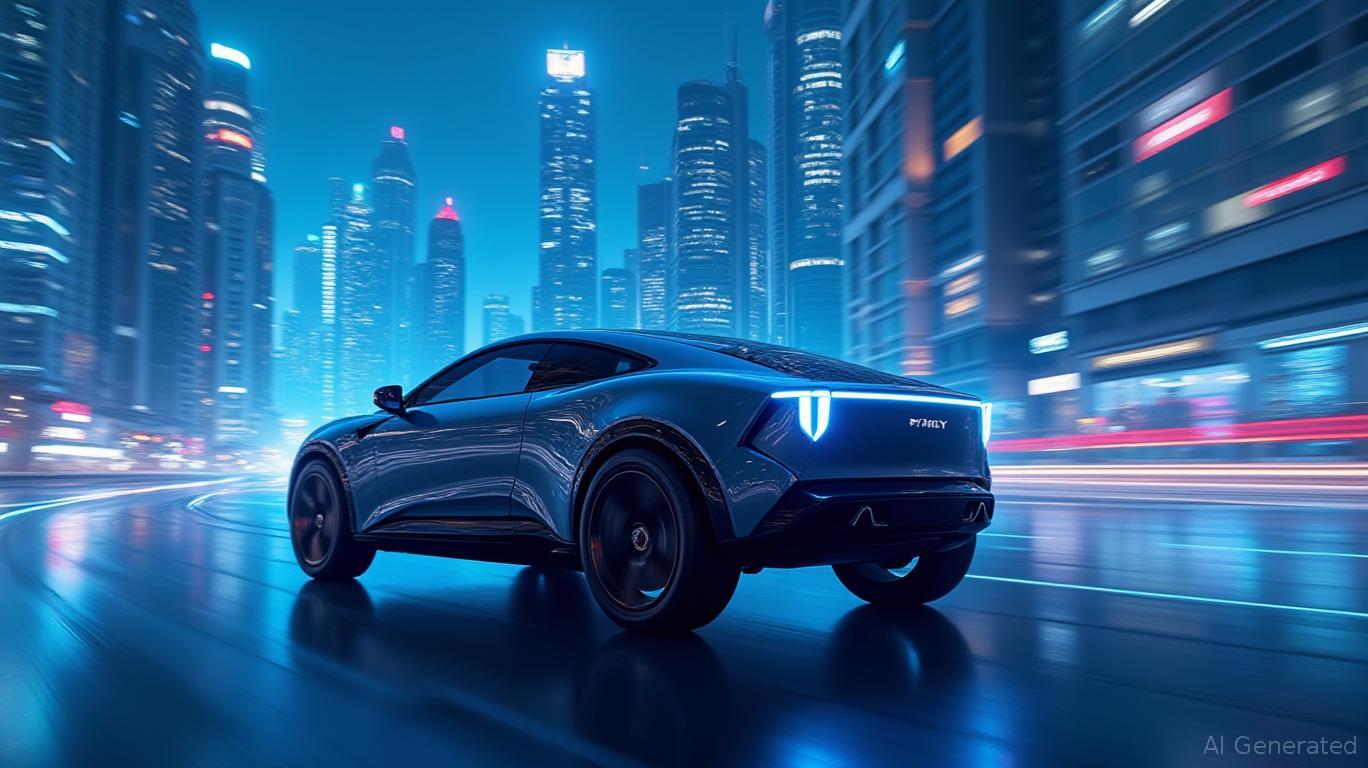Pony AI: Navigating Turbulent Waters to Autonomous Dominance
The autonomous driving sector is at a crossroads: a $3.4 trillion market by 2030, yet fraught with geopolitical headwinds, capital-intensive scaling, and regulatory uncertainty. Amid this volatility,
Inc. has emerged as a paradoxical beacon—its first-quarter 2025 results reveal both staggering potential and stark challenges. For investors, the question is clear: Is Pony AI a high-risk gamble or a buy-and-hold opportunity in the race to L4 autonomy?
The Near-Term Storm: Risks Lurking in the Rearview Mirror
Pony AI's Q1 2025 earnings underscore the harsh realities of scaling an autonomous ecosystem. While revenues rose 11.6% to $14 million, net losses widened to $37.4 million, a 79% year-over-year increase. The culprit? A mix of strategic bets and external pressures:
- Margin Erosion: Shifting revenue toward lower-margin autonomous domain controllers (ADCs) for robot delivery clients has slashed gross margins to 16.6%, down from 21% in 2024. This squeeze is amplified by rising operating expenses, which jumped 56% due to Gen 7 production prep and R&D hiring.
- Geopolitical Crosswinds: U.S.-China trade tensions continue to loom. Tariffs on semiconductors and critical minerals could inflate production costs, while Pony's $738.5 million cash reserves—down 10% in three months—raise questions about funding future growth without shareholder dilution.
- Execution Hurdles: Scaling the Gen 7 fleet to 1,000 vehicles by year-end demands flawless execution. Delays in mass production or regulatory approvals in markets like Luxembourg or Seoul could derail revenue targets.
The Long-Term Horizon: Why the Bull Case Remains Compelling
Beneath the noise of quarterly losses lies a company positioned to dominate autonomous ecosystems. Three pillars justify optimism:
1. The Gen 7 Revolution
Pony's Gen 7 system, unveiled in Shanghai, slashes bill-of-materials costs by 70% compared to prior iterations. This breakthrough leverages automotive-grade chips and optimized hardware, enabling mass production at $10,000 per unit—half the cost of rivals like Cruise or Waymo. With plans to deploy 1,000 Gen 7 vehicles by year-end, Pony is primed to achieve economies of scale, potentially turning its Robotaxi segment's 800% fare revenue growth into a profit engine.
2. Strategic Partnerships: A Global Playbook
Pony is not just a tech firm—it's a mobility ecosystem builder. Its alliances with Tencent (Weixin's Mobility Services platform) and Uber (targeting Middle Eastern markets) open doors to 1.5 billion users. The Singapore pilot with ComfortDelGro and China's first fully driverless license in Shenzhen further cement its leadership in regulated markets. These partnerships could accelerate Pony's fleet expansion to 2,000 sq km of operational coverage—nearly 20x larger than San Francisco's area.
3. Simulation & Safety: The Unseen Edge
Pony's PonyWorld simulation generates 10 billion km of testing data weekly, reducing reliance on physical road testing. This virtual backbone lowers insurance costs and accelerates regulatory approvals—a critical advantage in a sector where safety skepticism persists. Competitors like Tesla's FSD and Waymo still grapple with urban complexity; Pony's “Virtual Driver” tech adapts to chaotic Chinese cities, a moat in the world's largest mobility market.
The Tipping Point: When Will Pony Turn the Corner?
The inflection point hinges on three metrics investors must monitor:
- Gen 7 Adoption Rate: Track fleet expansion beyond 1,000 vehicles by end-2025. A faster rollout could slash unit costs further.
- Gross Margin Recovery: Watch for gross margins to rebound above 20% once ADC sales stabilize and Robotaxi volumes surge.
- Cash Efficiency: Pony's burn rate must slow as Gen 7 scales. A $1 billion capital raise could provide runway without steep dilution.
Investor Playbook: Seize the Dip, Target the Long Game
Pony AI's current $10 stock price—a 60% rebound from its $4 nadir—reflects investor recognition of its tech edge. Yet the market cap of $3.5 billion remains conservative against its $3.4 trillion addressable market. For aggressive investors, this is a buy-the-dip opportunity:
- Entry Point: $8–$10, below the 52-week low but above cash reserves per share ($10.14 as of Q1).
- Hold Horizon: 3–5 years, until Gen 7 achieves scale and Pony captures 5% of China's autonomous mobility market ($15 billion revenue potential).
- Exit Catalyst: Profitability in 2026, signaled by a Q4 2025 EBITDA breakeven.
Final Analysis: Volatility as a Buying Signal
Pony AI is a classic “value in volatility” story. Near-term risks—cash burn, geopolitical friction, execution delays—are real but manageable. The long-term prize—owning a slice of the autonomous driving stack in the world's fastest-growing mobility market—is too large to ignore. For investors with a multi-year horizon, Pony's current price represents a rare chance to buy a $3.4 trillion market leader at a 60% discount to its potential. The question isn't whether to bet on autonomous driving—it's whether to bet on Pony. The answer, for now, is a resounding yes.

Comments
No comments yet